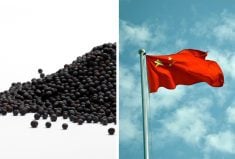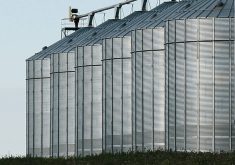WINNIPEG (CNS) – With barbecue season on the horizon, prices for Canadian pork rose during the week ended April 27, breaking out of their month-long fall. The timing could be perfect too as negotiators have already begun working on improving trade relations and cancelling proposed tariffs on Chinese imports of United States pork and other goods.
“Prices had been trending lower but they’ve popped up in the last week or two,” said Brad Marceniuk, provincial livestock economist for the government of Saskatchewan.
In Canada, the Signature#5 (Maple Leaf) Index price for April 27 was C$141.46 per ckg (dollars per hundred kilogram), which was up C$7.06 from the previous week.
Read Also

Canada and China discuss disputes over canola and EVs, says Ottawa
Senior Canadian and Chinese officials discussed bilateral trade disputes involving canola and electric vehicles on Friday, Ottawa said, but gave no indication of any immediate breakthrough.
“It’s a nice jump,” said Marceniuk, adding that prices should continue to trend higher going into June and July.
Part of the rise was attributed to holidays and a reduction in U.S. slaughter numbers. According to a release from Marceniuk’s department, the number of U.S. hogs processed under federal inspection for the week ending April 28 was 2.26 million, down three per cent from the previous week.
However, over the next year the USDA is projecting pork production in the U.S. to increase by five per cent. As a result, higher pork supplies and hog slaughter numbers should be felt throughout North America by early fall.
Prices for pork will definitely be under pressure, according to Marceniuk. But a recent expansion in large hog plants should enable the market to cope with the influx.
There are some concerns though, that if the Chinese tariffs on U.S. pork imports are imposed, it could mean a flood of product heading into Canada.
If that happens, Marceniuk expects the U.S. will look for other markets to ship pork to.
“The U.S. will probably supply less to China but open the door for something else,” he said.
While hog production is down at the moment, it’s a different story when looking at the total combination of meat being processed. The combined production of beef, pork and poultry over the four weeks ending April 21 was around 2.12 billion pounds, up 2.3 per cent from the same time a year ago.
Pork is always in competition with other meats during grilling season though, so the rise in overall production shouldn’t mean too much unless the other proteins decline substantially in price, relative to pork.














